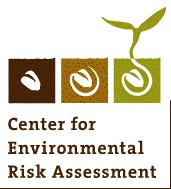PROTECTION OF SAFETY AND EFFICACY DATA


Protection from unauthorised commercial use of health and efficacy data submitted for regulatory purposes.
Data generated by a company for product registration is owned and proprietary “ownership right”. This ownership right is a fundamental right in many countries and applies to everything of value. In the past, a number of countries applied this principle to the handling of regulatory data and, consequently, provided protection of that data from commercial misuse for an infinite period of time.
Some governments now look differently at proprietary health, safety and environment registration data. They accept that protection of safety and efficacy data is required but for various reasons (such as the aim to avoid repetition of animal studies by a second registrant) they apply time limits to the protection and thus effectively limit the proprietary rights of the data owner.
Most countries provide 10 years for crop protection chemicals. The exclusivity period provides that these data are not available to be used or cited by any secondary applicant without the express permission of the data owner. It is similarly understood that regulatory authorities should not violate the period of exclusivity by allowing reliance on data submitted by the primary applicant to be used in the review of registration submissions of secondary applicants.
KEY POINTS ON PROTECTION OF REGULATORY DATA
- Enforceable trade secret and protection of safety and efficacy data prevents unfair competition, and is therefore a valuable instrument to encourage industry to invest in the development and registration of new active ingredients and products.
- Safety and efficacy data submitted to regulatory authorities are proprietary to the submitting company and must be protected from unauthorised use for the benefit of any secondary applicant.
- Secondary applicants are free to generate their own independent data unless prohibited by specific legislation, e.g. patent law.
- Registrations⁄ authorisations should not be granted to applicants who are not the rightful owners of the data submitted to the registration authority or have not been granted access to the data by the data owner.
- Provisions of exclusive use (for data in support of a new registration) should:
- Ensure a minimum 10 year exclusivity period for new chemicals, to the titleholder of the studies (beginning from the date of market approval of the innovative product in the country where the product is approved)
- Allow authorisation of the market entry of a copy product only following expiration of the 10 year exclusivity period based on safety and efficacy data provided by the first registrant – provided the copy product registrant demonstrates that the chemical profile of the copy product (including the active ingredient) is equivalent to the original product or has its own safety and efficacy data, and therefore does not represent an unacceptable risk to users, consumers, or the environment
- Ensure that any publication of data summaries for the benefit of transparency does not represent disclosure to the public domain and the loss of protection
- Ensure that the exclusive period starts with the ‘effective’ date of approval, i.e. the date the registrant is permitted to commercialise the product. It should also make it clear that during review by regulatory authorities the data submitted for registration are to be treated as confidential business information, and are therefore “naturally” protected from being cited or used by secondary applicants.